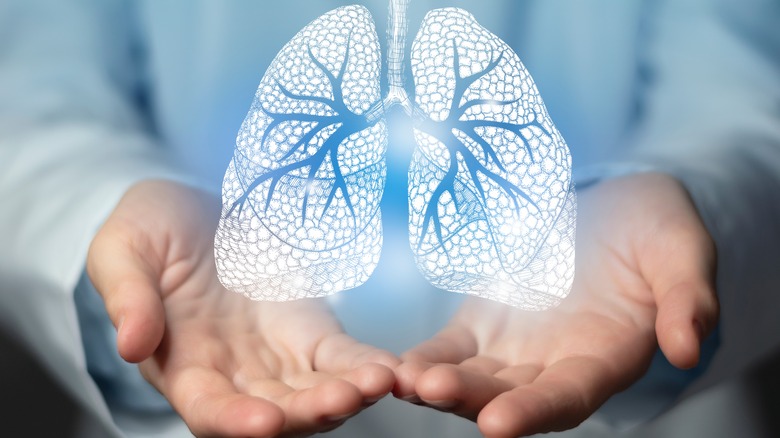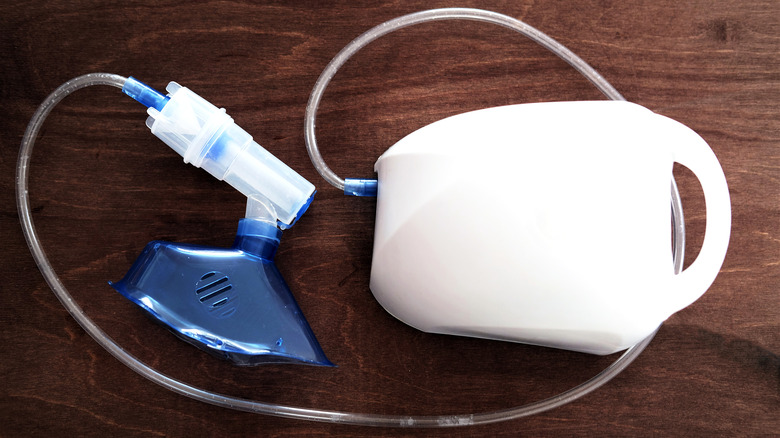How To Properly Use A Nebulizer
One in 13 people in the U.S. have asthma, according to the Asthma and Allergy Foundation of America, and more than 15 million Americans deal with COPD or chronic obstructive pulmonary disease (per the CDC). While asthma can cause coughing, shortness of breath, and pain in the chest, COPD can cause shortness of breath, cough, phlegm production, and wheezing. These are just two of the common breathing conditions that can require prescribed medical treatment, but other breathing-related troubles such as cough or lung inflammation are also regularly diagnosed and prescribed medicine. This medicine has to be delivered quickly through inhalation to be administered appropriately and have the necessary benefit. While an inhaler can be used, another option provides medicine with even greater ease (via Healthline).
A nebulizer is a machine that can turn medicine into a mist that you can breathe in. The process usually takes less than 20 minutes for the dosed liquid medicine to be transformed and inhaled. Nebulizers are small enough to travel, so they can be readily available anywhere. All that is required to self-administer a dose is the liquid medicine and the machine, which consists of a compressor, the medicine cup, the hose, and a mouthpiece for inhaling (per Medline Plus).
How to use a nebulizer
Using a typical compressor nebulizer requires following a few simple steps to ensure safety, sanitation, and proper administration of medicine.
Begin by using a clean nebulizer and washing your hands. Open the medicine cup lid and carefully pour in the prescribed dose. Seal the cup tightly, and be sure to hold the cup upright while the medicine is inside. Securely connect the hose from the bottom of the medicine cup to the connection port on the compressor. Fix the mouthpiece or face mask, often used if administering to children, to the nebulizer. Turn on the machine and watch for the mouthpiece to begin misting, per WebMD. Place your lips firmly around the mouthpiece and breathe slowly until all the medicine has been emptied and absorbed into your lungs. A nose clip can also be used to prevent you from breathing through your nose and not inhaling the medicine. Turn off the machine, wash the mouthpiece and medicine cup with water, and let it completely dry before your next use (via Medline Plus).
When medicine sticks to the cup, it is acceptable to shake it to get the liquid loose. If used correctly, there should be little to no liquid left in the cup after dosing. If dizziness occurs during use, you can stop and return to it after five minutes of regular breathing without the nebulizer. Be sure to speak to your prescribing physician if side effects occur (via WebMD).


